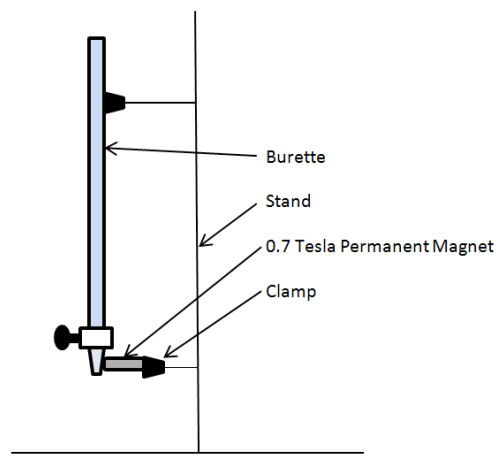Diamagnetic Solutions Show a Significant Reduction in Flow Rate When Exposed to a Magnetic Field Greater Than or Equal to 0.7 Tesla
(1) Vista Ridge High School, Cedar Park, Texas
https://doi.org/10.59720/14-023
Magnetohydrodynamics describes the complex interactions between water and magnetic fields. These interactions are relatively small in magnitude, and difficult to measure. However, the magnet-water interactions can be seen through the change in certain behaviors of water, such as the flow rate. This project was designed to determine the relationship between magnetic fields and flow rate in diamagnetic fluids. The researchers used a vertical 50 mL burette with a 0.7 Tesla permanent magnet attached with a clamp. Trials were run by allowing gravity to pull 25 and 50 mL volumes of water, varying concentrations of sodium chloride solution, and recording the time for the burette to empty. These trials showed that the introduction of a magnetic field led to a decrease in flow rate in all solutions, with the 1 M solution showing a significant reduction of flow rate when exposed to a magnetic field. These results led the researchers to believe that the Lorentz force opposes flow rate in a diamagnetic, electrically conductive material by a significant margin. If this conclusion is true for all diamagnetic, electrically conductive fluids, it can be inferred that magnetic fields could be used to resist the flow of blood, giving rise to a host of new approaches to surgery and the care of lesions and hemorrhages.
This article has been tagged with: